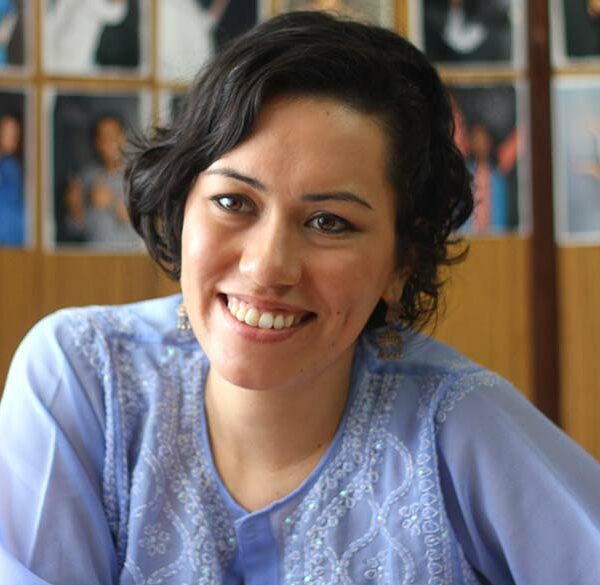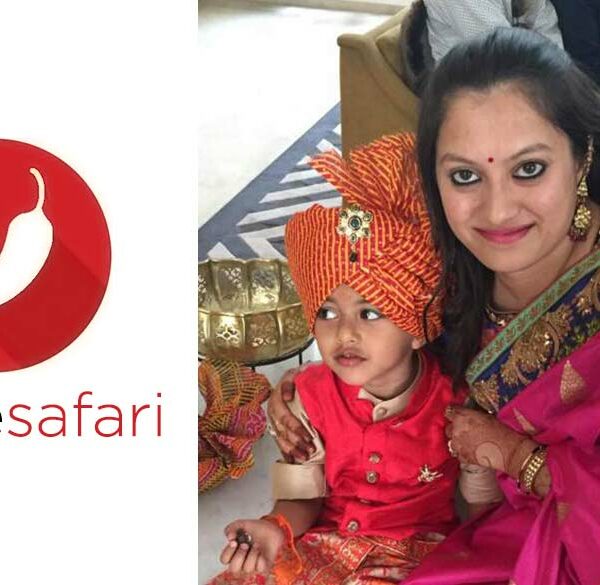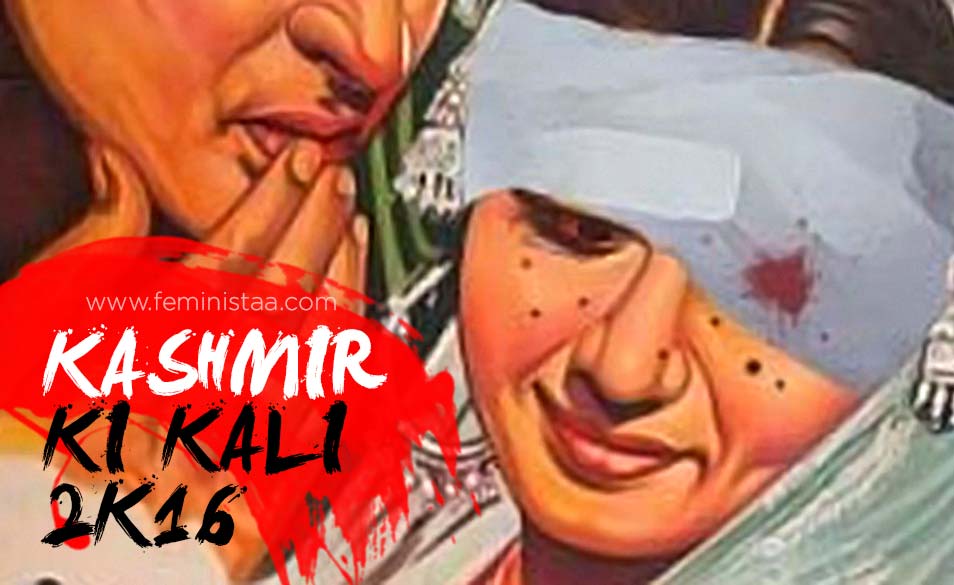The first name you read when you Google ‘Female Bartenders in India’ is Ami Behram…
Read More →

The first name you read when you Google ‘Female Bartenders in India’ is Ami Behram…
Read More →
Society is what you make of it. For me, the people that love me accept…
Read More →
Kavita Nair joined as the first female product manager at Vodafone. And she has never…
Read More →
Meet Mary Ellen Matsui, Executive Director, ATMA.org. in an exclusive interview with Feministaa. Atma is a…
Read More →
For years, Kota Neelima has been trying to frame a new narrative in the Indian…
Read More →
Is there something which the Indian women still struggle with, in spite of them shining…
Read More →
It was around 2 years ago when Manisha Raisinghani decided to quit her high paying…
Read More →
It took me over a 100 attempts to get an investor for my start-up! “What…
Read More →
I had a bad pregnancy and quit my job overnight! Tulsi Khemka never planned on…
Read More →
“There is never a situation in life where you don’t have an option. You always…
Read More →
The first name you read when you Google ‘Female Bartenders in India’ is Ami Behram…
Read More →
Society is what you make of it. For me, the people that love me accept…
Read More →
Kavita Nair joined as the first female product manager at Vodafone. And she has never…
Read More →
Meet Mary Ellen Matsui, Executive Director, ATMA.org. in an exclusive interview with Feministaa. Atma is a…
Read More →
For years, Kota Neelima has been trying to frame a new narrative in the Indian…
Read More →
Is there something which the Indian women still struggle with, in spite of them shining…
Read More →
It was around 2 years ago when Manisha Raisinghani decided to quit her high paying…
Read More →
It took me over a 100 attempts to get an investor for my start-up! “What…
Read More →
I had a bad pregnancy and quit my job overnight! Tulsi Khemka never planned on…
Read More →
“There is never a situation in life where you don’t have an option. You always…
Read More →
The first name you read when you Google ‘Female Bartenders in India’ is Ami Behram…
Read More →
Society is what you make of it. For me, the people that love me accept…
Read More →
Kavita Nair joined as the first female product manager at Vodafone. And she has never…
Read More →
Meet Mary Ellen Matsui, Executive Director, ATMA.org. in an exclusive interview with Feministaa. Atma is a…
Read More →
For years, Kota Neelima has been trying to frame a new narrative in the Indian…
Read More →
“If there’s heaven on earth, it’s here, it’s here, it’s here,” said Mughal Emperor Jahangir on the captivating beauty of Kashmir Valley.
Kashmir has been India’s most valued and breathtaking paradise. Kashmir was and still is India’s most attractive tourist destination but there’s one difference now.
For what was once considered a beautiful paradise has now turned into a ‘Hostile Zone’.
Soon, India will be marking 70 years of Independence, but people in Kashmir are yet calling out for ‘Aazadi.’
The history of Kashmir conflict is vast and debatable. It has been a moot point, pre and post independence. Earlier the people had been fighting for freedom from British rule. The people belonging to the Kashmir region at that time, did not want the princes and the emperors to rule over them, as the princes wanted an independent rule leaving no hope for democracy. The then ruler of Kashmir, Maharaja Hari Singh, who was of a regressive mindset and tortured the Muslim community during his reign, had to decide on whether to choose India to be with or Pakistan.
Maharaja Hari Singh chose to stay neutral, giving birth to the India-Pakistan battle we are still witnessing today.
The violence had begun, killings had increased, the war between India and Pakistan was heating up. But the first incident that started the minority-majority war in Kashmir was the 1998 Wandhama Massacre.
23 innocent Kashmiri Hindu Pandits, including 4 children, 9 women and 10 men were murdered by unidentified gunmen in the village of Wandhama, in 1998.
This horrifying incident marked the beginning of merciless killings in the mesmerising Kashmir valley. The then government was heavily criticised for the ongoing violence against the Kashmiri Pandits that were a minority.
But the fact that was prominent in all these incidents was that militancy and terrorism had taken birth.
The rise of new militant groups and unexplained killings of innocent members of the community contributed to an atmosphere of insecurity for the Kashmiri Pandits. Joint reconciliation efforts by members from both Muslim and Pandit communities were actively discouraged by the then governor Jagmohan. Most of the estimated 162,500 Hindus in the Valley, including the entire Kashmiri Pandit community, flee the Valley in March.

All of this was a result of the political and violent battle between India and Pakistan over “Aazad Kashmir.”
But one thing was visible very clearly, that this was just the beginning of a war and not the end.
In 1990, Armed Forces Special Power Act (AFSPA) was applied to Jammu and Kashmir. Under AFSPA, Indian Armed Forces are granted special powers. The act was imposed due to these reasons :
Kashmir was officially declared a ‘disturbed’ area. It no more remained the same beautiful land that it was.
Since then AFSPA has been a major cause of concern and a debatable topic. A majority of people in Kashmir as well as people from different regions in India, wants it removed whereas some feel that it should remain imposed on Kashmir for it’s own and India’s security.
Why do people want AFSPA to be removed?
Under AFSPA, the army is given certain rights that even go against the basic human rights granted by the constitution. When the act was passed, it was passed with an intention of curbing down the increasing militancy and infiltration, giving rise to violence. But, in the years following the imposition of the act, the heavy misuse of the rights given to the army was noticed.
Increase in the number of fake encounters and random disappearances of Kashmiris : According to the rule of AFSPA, An army official under the act, can arrest any individual, even on a suspicion, without an arrest warrant. Also, they have the right to enter and search any premise in order to make these arrests. Taking advantage of this special right, many security personnel have arrested and even encountered men, women and even children.
In 2010 three men were reported missing. It was later found out that the men were encountered in a gun battle with the army claiming them to be militants. Similarly, In 2011, a Special Police Officer and an Indian Army Jawan were charged by the Kashmir police for murder of a civilian whom the duo had killed in an encounter claiming that he was a top Lashkar-e-Taiba militant.
Sexual Violence and the Misery : The Indian Army, police officials and other security personnel in Kashmir have been accused of using extreme torturous techniques on Kashmiris. The most chilling account of Indian Army’s misuse of their powers is the heinous Kunan-Poshpora mass rape case, where women ranging from a number of 50-100, were raped by the men who were supposedly assigned to protect them in the valley.
In February 1991, Army personnel of Rajputana Rifles entered the Kunan Poshpora village with the mission to identify and take away grenades. They interrogated all the men of the village, severely tortured them (physically and emotionally) to the extent of barbarism while raping the women of the village, irrespective of their age, at gun point.
The Kashmiri lawyer Parvez Imroz, who was even shot by the security forces, had documented 1500 cases of people becoming impotent after their genitals were electrocuted.
The most shocking incident of Army’s torture is the case of a 60-year-old Kashmiri man who was held captive for a month and forced to eat his own flesh, cut from his own body.
AFSPA was imposed with a motto of saving people from violence and torture but sadly, more of bloodshed and protests have been seen post the act. There have been innumerable curfews imposed in Kashmir. People are even scared of coming out of their houses because of the fear they have regarding the Indian Army.
This fear has either given rise to suicides or militancy.
The recent outrage in Kashmir began with the death of who was considered the most recent and popular face of insurgency in Kashmir, Burhan Wani.

It was a great victory for the Indian Army to have killed the new commander of Hizbul Mujahideen, but the kind of response they got from Kashmir was more like a failure.
Burhan’s father said that the path his son took was his decision but the circumstances forced him to choose the gun. And sadly it is not just Burhan but many other young men who choose to follow the path of violence because of the torturous conditions inflicted upon them.
Although, Violence can never be justified. Hence, the condition and techniques used by the Army in the present situation to control the outrage cannot be justified in any circumstance.
The use of pellet guns, by the Indian Army is not only killing people but making them even more afraid to live in Kashmir.
There have been many cases under which so many innocent people have suffered heavily because of this lethal weapon. Many artists have tried to convey the pain of the people using powerful imagery like these :
The sad part is that the government is still playing the blame game and making excuses and the use of pellet guns has still not been banned.
On one side where India is getting prepared to celebrate 70 years of Independence, while the “Integral Part of India,” Kashmir is still breathing under curfew.
Kashmir has always been a victim of political propaganda. It still is. It is to be noted that a majority of people in Kashmir just want an Independent Kashmir and not to be with Pakistan or India. Slogans of ‘Aazadi’ in Kashmir actually refers to the Aazad Kashmir that India has often pretended to offer.
But what if freedom is granted to Kashmir? Will it be run by ‘separatists’? Will the War end? Or will it turn out to be another ‘Syria’?
It is difficult to answer the above questions, but it is more difficult to live in situations where you can be checked and frisked anytime. Where the networks can go anytime and internet can be snatched away. Where the only news you get is of the curfews imposed in certain areas. Where you go out of the house and all your parents could wish for is to be able to see their child again.
Some of the top inspiring women and men have often tried to aware people of the reality of AFSPA and the pain that the Kashmiri population is going through, but sadly it gets neglected by our “responsible” government.
It is extremely disheartening to see the “Switzerland of India” being covered in innocent blood, shed almost every day.
© Feministaa 2024 Media Pvt. Ltd. All rights reserved


